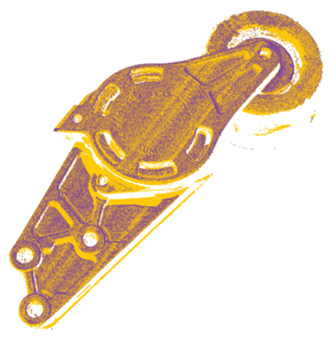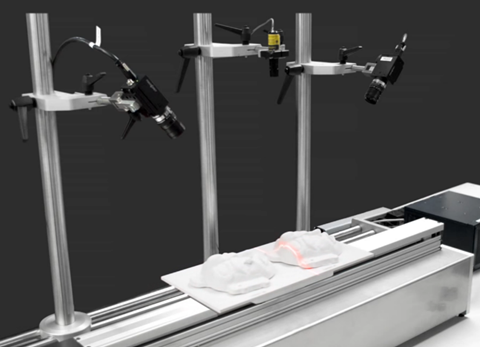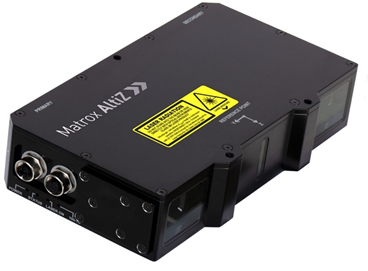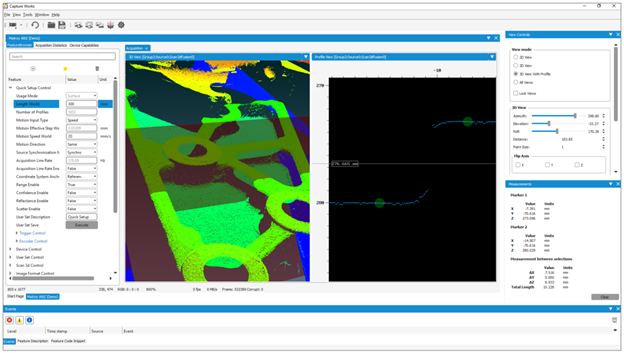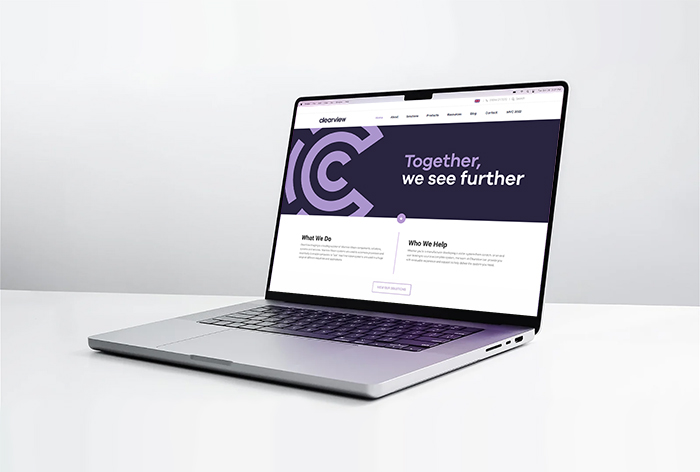|
| As explored in our last blog post, there are four main 3D technologies used in machine vision: Stereo Vision, Time of Flight (ToF), Structured Light, and 3D Profiling (laser triangulation). In this blog post we will cover 3D Profiling, exploring the technology in play and how it can solve problems in machine vision. What is 3D Profiling?3D profiling is a 3D vision strategy that measures the alteration of a fixed laser line when projected onto an object using a camera mounted at a known offset angle. When the object passes through the laser line, thousands of profiles are generated per second, resulting in a highly accurate 3D image of the target object. This technology is an active method of 3D vision, relying on lasers and a structured environment in addition to a machine vision camera to work effectively. 3D profiling requires motion to measure the profile of the object. This is what facilitates the ‘scan’ that the sensor captures as the target object passes through the laser line. High Level of AccuracyDue to the use of laser profiling, this 3D technology can measure an object with an extremely high degree of accuracy, with a depth resolution in micrometres (μm). The result is a spectacularly detailed point cloud of the object.
High level of accuracy reflected in point cloud.
Advantages and Disadvantages of 3D ProfilingWhen evaluating the pros and cons of 3D profiling technology against your chosen application, it is important to factor in cost and ease of setup, as well as consider the factors that may stand in the way of a successful 3D profiling rig. 3D profiling generally struggles with overly reflective or light-absorbing surfaces. Deciding on the right wavelength and power of the laser according to the surface material of your target object is key. On the plus side, 3D profiling excels at shorter distances, allowing engineers and OEMs to implement 3D vision in more claustrophobic environments. 3D profiling overall is best at height and shape measurement, for applications such as metrology and surface inspection. Laser triangulation can also be a robust option in areas with a pre-installed conveyor, such as automobile inspection or food quality control (QC). 3D Profiling Rig SetupThe line laser diode used is usually placed at a fixed perspective, perpendicular to the direction of the object’s motion. The camera is then placed at a known angular offset from the target.
‘DIY’ 3D Vision setup with two cameras and one laser.
Multiple cameras can be used to reduce occlusion and increase accuracy of surface measurement at the lowest points. For those who don’t mind sourcing individual parts for their own ‘DIY’ laser triangulation rig, robust results can be yielded if they are prepared to put in the legwork. This includes calculating the angular deviations involved, using the best algorithm to determine peak detection (or beam extraction), and selecting the right camera(s), lens(es), and laser. Choosing the Right HardwareIf the DIY approach is viable for your application, we recommend consulting our products page and sales team to help you choose the right parts. We offer a vast range of machine vision cameras, lenses, and lasers to help you build your DIY 3D Profiling rig. However, if speed of setup is key, or if your application requires multiple 3D sensors, then a ‘plug-and-play’ solution may be preferable. The Matrox AltiZ is an all-in-one high-fidelity 3D profile camera, and overall a great choice for those seeking a laser triangulation system that is straightforward to set up. Featuring a dual-camera, single-laser design, Matrox AltiZ greatly lessens the scanning gaps often encountered at critical surface junctures due to optical occlusions. Matrox AltiZ
Unique algorithms running inside the sensor automatically generate various types of reliable 3D data – individual profiles, depth maps, or point clouds –combining the pixel data from the two integrated image sensors, which is automatically sampled for a constant horizontal resolution. Check out our demo of the Matrox AltiZ Above This means you can implement an effective 3D profiling system without much of the rigorous preparation required for a DIY approach. The robust IP67-rated aluminium housing and M12 connectors also mean that system integrators can deploy this camera confidently in tough industrial settings. 3D Profiling SoftwareThe AltiZ also benefits from a GenICam-compliant GigE vision interface as standard to work directly with Matrox Imaging and third-party vision software. Matrox Imaging Library (MIL) X enables users to combine their 3D vision rig with image capture, processing, analysis, display, and archiving, suitable for a wide variety of industrial machine vision applications.
Matrox Capture Works contains views specific to the Matrox AltiZ for tuning peak laser line extraction, configuring the scanning volume, and setting up device triggering.
The 3D sensors also work with Matrox Design Assistant X, a windows-based integrated development environment (IDE) based on MIL, where vision applications result from the construction of flowcharts and their human-machine interface (HMI) from the creation of web pages. For further information on the above feel free to consult our informative e-book on 3D Imaging Techniques. Specifications for different 3D imaging solutions can be found in the data sheets of our cameras, available on our website to help you make the decision when choosing the optimal 3D machine vision camera model for your industrial application. |





